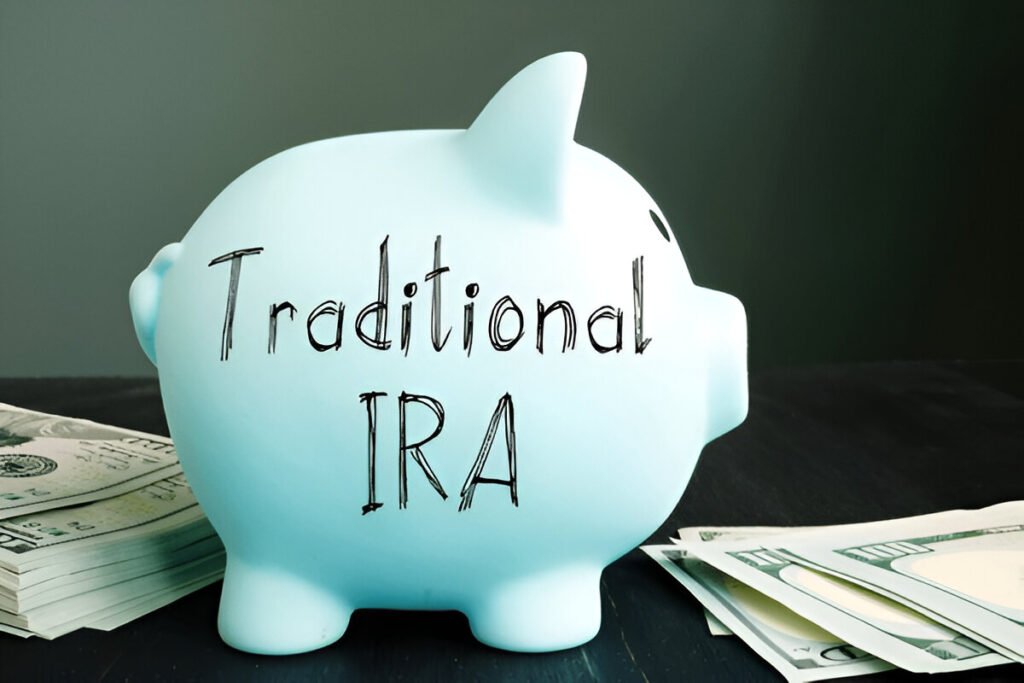
Gold IRA vs Traditional IRA: See which option offers better inflation protection, tax advantages, and long-term security for your retirement.
Planning for retirement is one of the most important financial decisions you’ll ever make. It’s not just about how much you save—it’s also about where and how you invest those savings. With rising inflation, stock market volatility, and economic uncertainty, more investors are exploring alternative ways to protect and grow their nest egg.
Two of the most common options in the retirement world are the Traditional IRA and the Gold IRA. While they both offer tax-advantaged ways to save for the future, they serve very different roles in your retirement portfolio.
In this guide, we’ll break down the key differences between a Gold IRA vs Traditional IRA, explain how each works, highlight their pros and cons, and help you determine which one might be right for your financial goals.
What Is a Traditional IRA?

A Traditional IRA (Individual Retirement Account) is a tax-advantaged retirement savings account that lets you invest in a wide range of paper assets. It’s one of the most widely used retirement vehicles in the U.S.
How It Works
- You contribute pre-tax or after-tax dollars (depending on your income and eligibility).
- Contributions may be tax-deductible—helping you lower your taxable income today.
- Investments grow tax-deferred until you withdraw funds in retirement.
- You pay ordinary income tax on distributions after age 59½.
- Required Minimum Distributions (RMDs) start at age 73 (as of 2025 rules).
What Can You Invest In?
Traditional IRAs are usually offered by banks, brokerages, or financial institutions and include investments such as:
- Stocks
- Bonds
- Mutual funds
- ETFs
- CDs
These are paper-based assets and often managed passively or through mutual fund options.
Tax Benefits and Rules
- Contribution limit (2025): $7,000/year or $8,000 if age 50+
- Contributions are often tax-deductible
- Withdrawals before age 59½ may incur a 10% penalty, plus taxes
- RMDs are mandatory starting at age 73
What Is a Gold IRA?

A Gold IRA is a type of self-directed IRA that allows you to hold physical gold and other IRS-approved precious metals in your retirement account. It’s designed for investors who want more control over their retirement assets—and greater protection against inflation and financial uncertainty.
How It Works
- A Gold IRA is set up through a self-directed IRA custodian.
- You can roll over or transfer funds from an existing Traditional IRA or 401(k).
- You buy IRS-approved physical gold, silver, platinum, or palladium.
- The metals are securely stored in a designated, IRS-approved depository.
IRS-Approved Precious Metals
To qualify, your precious metals must meet specific fineness standards. Some common examples include:
- Gold American Eagle Coins
- Canadian Maple Leafs
- Gold bars (0.995 purity or higher)
- Silver (0.999 purity)
- Platinum and palladium coins/bars
You cannot store the metals at home; they must be held by a custodian in an insured vault.
Gold IRA vs Traditional IRA: Side-by-Side Comparison
| Feature | Traditional IRA | Gold IRA (Precious Metals IRA) |
| Allowed Assets | Stocks, bonds, mutual funds, ETFs | Physical gold, silver, platinum, palladium |
| Tax Treatment | Tax-deferred growth, deductible contributions | Same as Traditional IRA |
| Custodian Requirements | Standard banks or brokerages | Self-directed IRA custodian required |
| Inflation Protection | Limited | High (gold is a historic hedge) |
| Volatility/Risk | Tied to market conditions | Less tied to stock market volatility |
| Setup & Maintenance Fees | Typically low | Higher (due to metal storage and insurance) |
| Diversification Potential | Limited to paper assets | Diversifies into physical commodities |
Pros and Cons of Each IRA Type
Understanding the strengths and limitations of both options helps you make a better-informed decision.
✅ Traditional IRA: Pros
- Easy to set up and manage
- Low administrative fees
- Familiar paper assets
- Contributions may lower taxable income
❌ Traditional IRA: Cons
- Vulnerable to stock market crashes
- Limited asset class (only paper investments)
- Inflation can erode value over time
✅ Gold IRA: Pros
- Hedge against inflation and currency devaluation
- Real, physical assets with intrinsic value
- Diversifies your retirement portfolio
- Same tax advantages as Traditional IRAs
❌ Gold IRA: Cons
- Higher setup and storage fees
- Requires IRS-approved custodian and storage
- Not as liquid as stocks or bonds
When to Choose a Gold IRA Over a Traditional IRA
While both IRAs serve a purpose, a Gold IRA may be a better fit in certain scenarios:
Consider a Gold IRA if:
- You’re concerned about inflation or the declining value of the U.S. dollar.
- You’re nearing retirement and want portfolio protection from stock market volatility.
- You want to diversify your retirement savings beyond traditional stocks and bonds.
- You believe in the long-term value of physical gold and precious metals.
Gold’s historical performance during times of economic uncertainty makes it a popular choice among conservative investors looking for wealth preservation.
How to Open or Rollover to a Gold IRA
If you already have a Traditional IRA or 401(k), you can roll it over into a Gold IRA without penalties—if done correctly.
Step-by-Step Guide to Setting Up a Gold IRA:
- Choose a Self-Directed IRA Custodian
Find an IRS-approved custodian that specializes in precious metals IRAs. - Open a New Gold IRA Account
Complete application paperwork and identity verification. - Fund the Account
You can do a rollover from an existing IRA or 401(k), or make a direct contribution. - Select Your Metals
Work with a precious metals dealer or custodian to choose IRS-approved coins and bars. - Arrange Secure Storage
Your custodian will store your metals in an IRS-compliant depository, such as Delaware Depository or Brink’s.
Important Notes:
- Indirect rollovers (receiving the funds yourself) must be completed within 60 days to avoid taxes/penalties.
- You cannot store metals at home—they must be held by an approved custodian.
Conclusion: Which IRA Is Right for You?
Both Traditional IRAs and Gold IRAs have their place in a diversified retirement strategy.
- If you’re early in your investing journey, comfortable with market risk, and want a hands-off experience, a Traditional IRA might be the way to go.
- But if you’re worried about inflation, economic downturns, or overexposure to the stock market, a Gold IRA provides a valuable hedge and greater peace of mind.
Your retirement portfolio doesn’t have to be one-size-fits-all. Many investors choose to balance both IRA types, using a Traditional IRA for growth and a Gold IRA for protection.
Ready to Secure Your Retirement?
Take control of your financial future with a smart, diversified retirement plan.
Download your free Gold IRA investment guide today or request a free Gold IRA kit from a trusted provider.
Don’t wait until the next market dip to protect your wealth—start planning now.